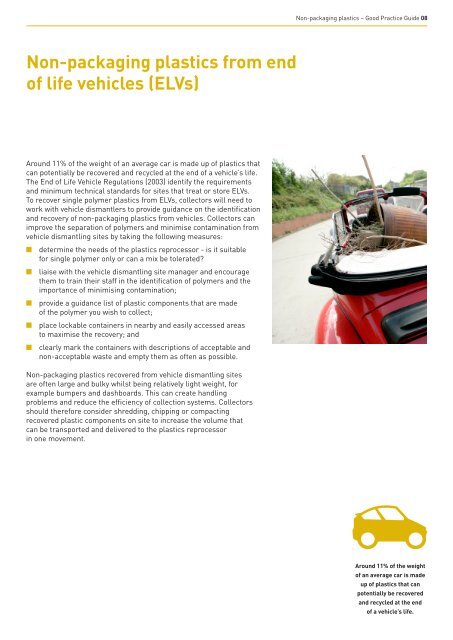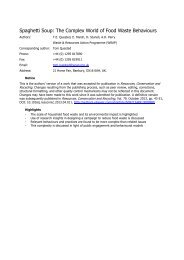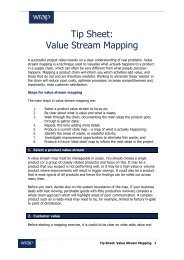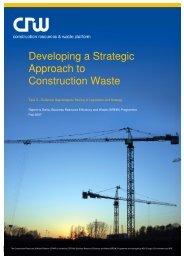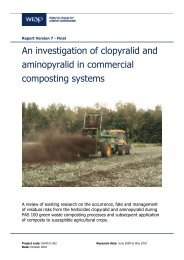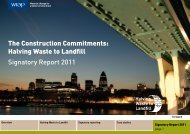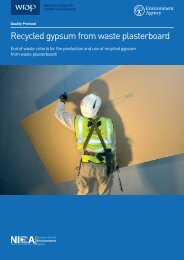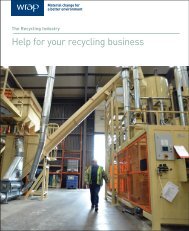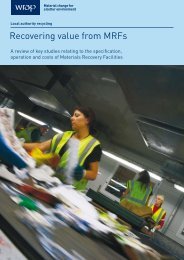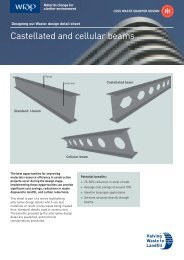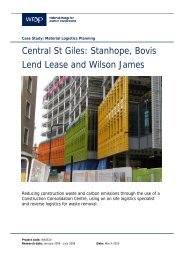non-packaging plastics environmental good practice guide ... - Wrap
non-packaging plastics environmental good practice guide ... - Wrap
non-packaging plastics environmental good practice guide ... - Wrap
- No tags were found...
Create successful ePaper yourself
Turn your PDF publications into a flip-book with our unique Google optimized e-Paper software.
Non-<strong>packaging</strong> <strong>plastics</strong> – Good Practice Guide 08Non-<strong>packaging</strong> <strong>plastics</strong> from endof life vehicles (ELVs)Around 11% of the weight of an average car is made up of <strong>plastics</strong> thatcan potentially be recovered and recycled at the end of a vehicle’s life.The End of Life Vehicle Regulations (2003) identify the requirementsand minimum technical standards for sites that treat or store ELVs.To recover single polymer <strong>plastics</strong> from ELVs, collectors will need towork with vehicle dismantlers to provide guidance on the identificationand recovery of <strong>non</strong>-<strong>packaging</strong> <strong>plastics</strong> from vehicles. Collectors canimprove the separation of polymers and minimise contamination fromvehicle dismantling sites by taking the following measures:n determine the needs of the <strong>plastics</strong> reprocessor - is it suitablefor single polymer only or can a mix be tolerated?nnnnliaise with the vehicle dismantling site manager and encouragethem to train their staff in the identification of polymers and theimportance of minimising contamination;provide a guidance list of plastic components that are madeof the polymer you wish to collect;place lockable containers in nearby and easily accessed areasto maximise the recovery; andclearly mark the containers with descriptions of acceptable and<strong>non</strong>-acceptable waste and empty them as often as possible.Non-<strong>packaging</strong> <strong>plastics</strong> recovered from vehicle dismantling sitesare often large and bulky whilst being relatively light weight, forexample bumpers and dashboards. This can create handlingproblems and reduce the efficiency of collection systems. Collectorsshould therefore consider shredding, chipping or compactingrecovered plastic components on site to increase the volume thatcan be transported and delivered to the <strong>plastics</strong> reprocessorin one movement.Around 11% of the weightof an average car is madeup of <strong>plastics</strong> that canpotentially be recoveredand recycled at the endof a vehicle’s life.


